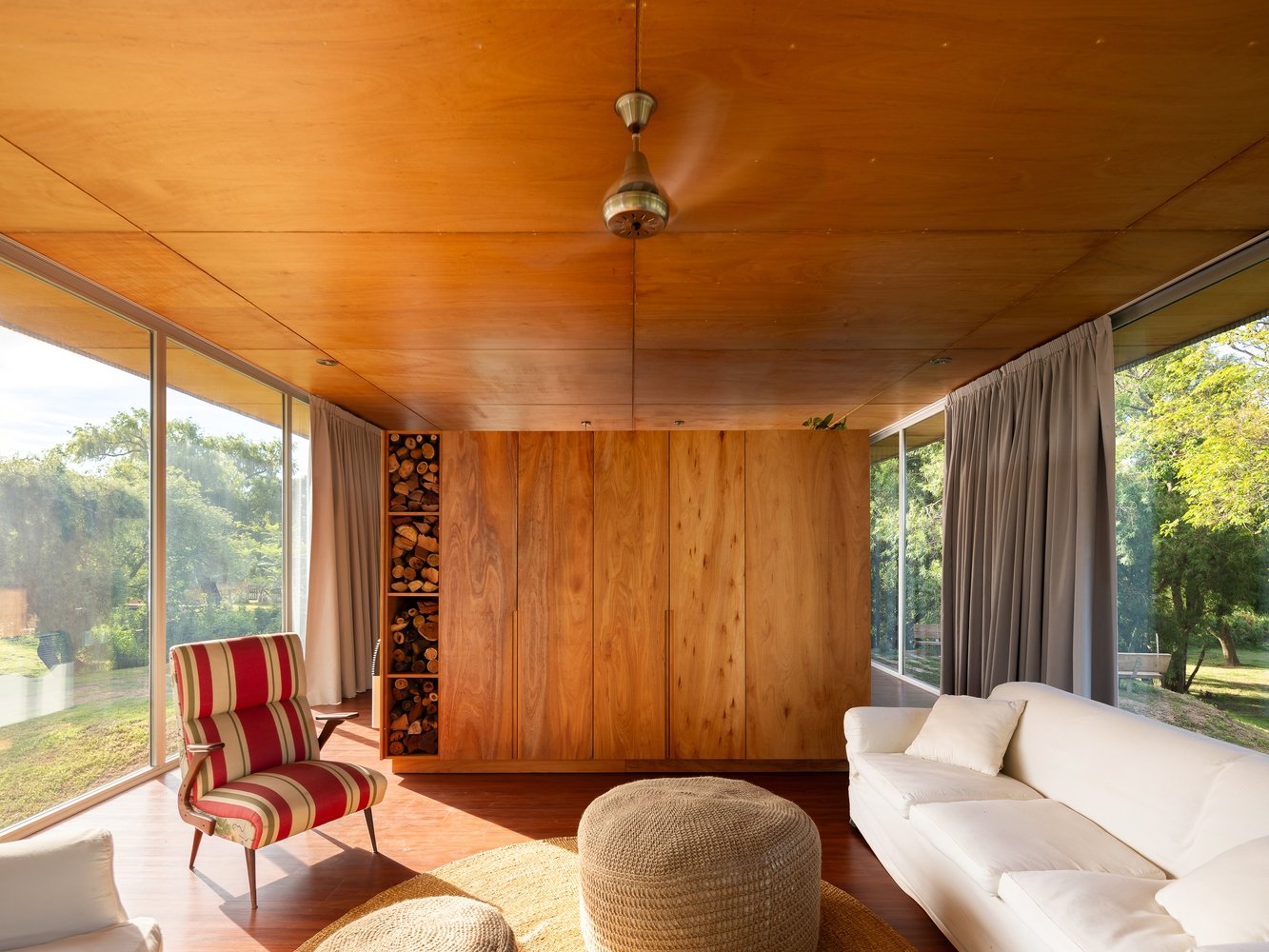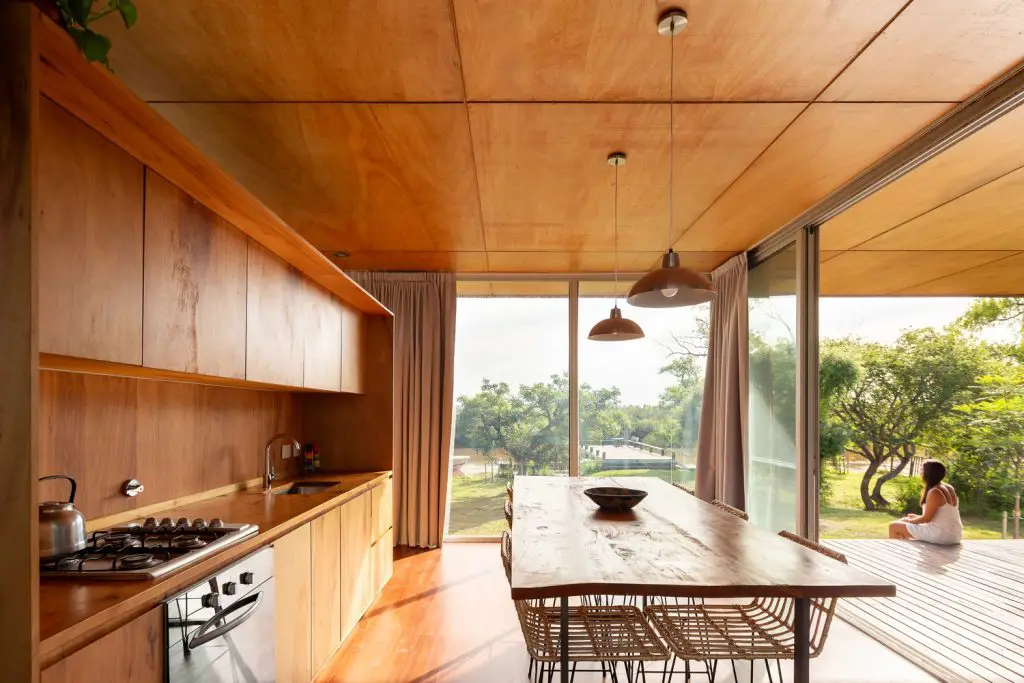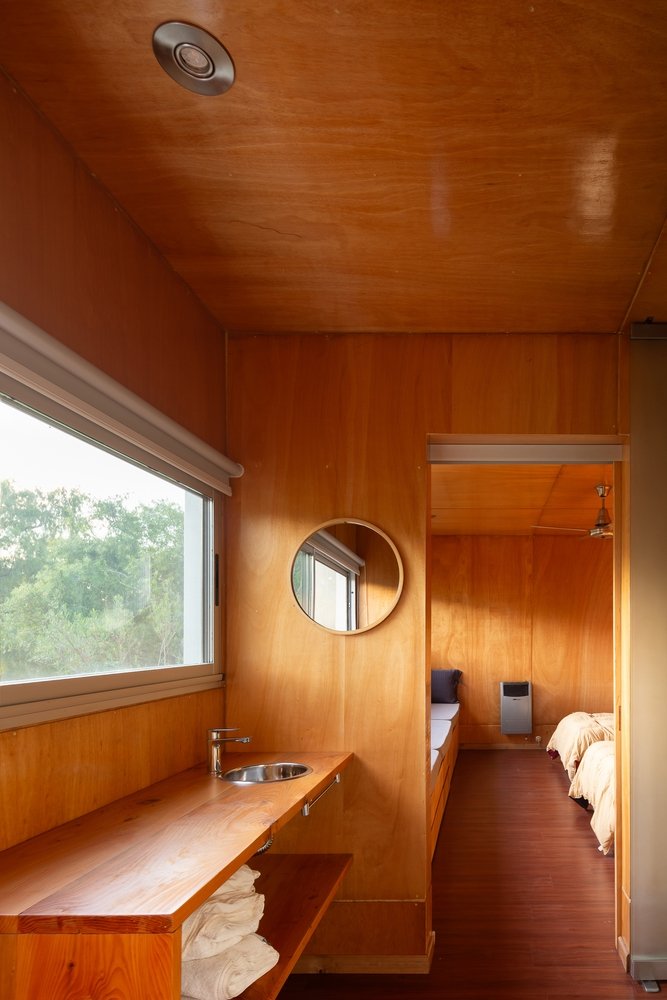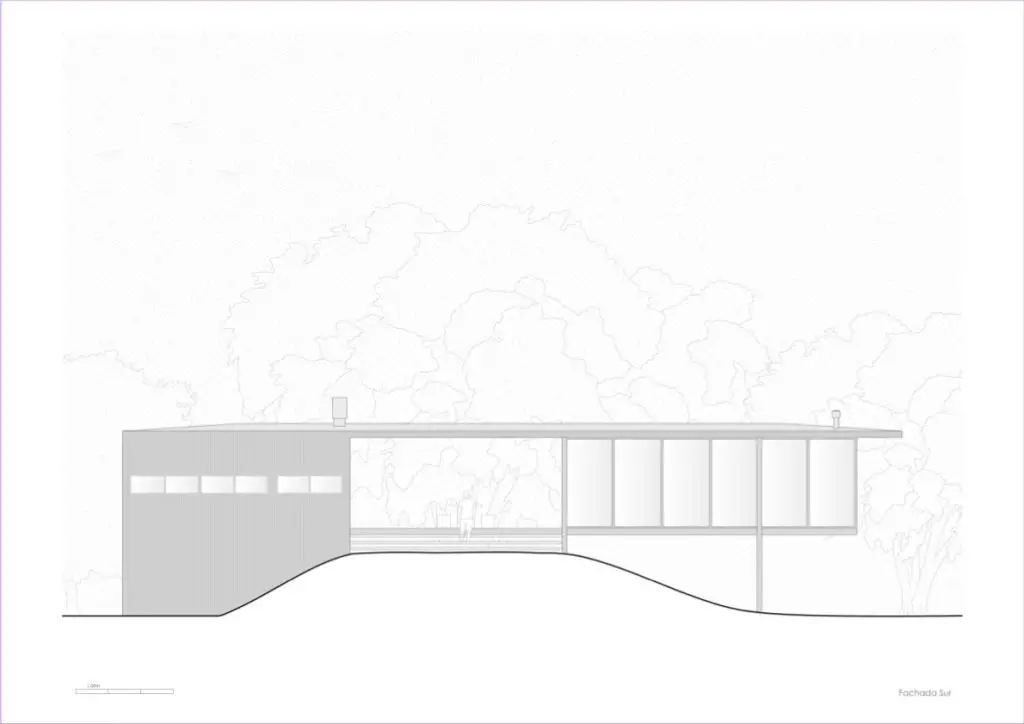
Set within the lush, shifting landscape of Argentina’s Paraná River Delta, this cantilevered home elegantly responds to the natural rhythms of its wetlands setting. Situated on El Chirigüe island, beside the gentle flow of the Lechiguana Stream, the design thoughtfully navigates the unique challenges posed by intermittent flooding and a lack of conventional infrastructure.
Architect Mateo Gagliardo embraced two clear design axes to frame their approach. First, a visual and spatial axis connects the riverfront directly through the structure, from dockside to a notable mature tree at the rear of the property.
The second axis enhances the internal layout, utilising an expansive gallery as a transitional area that smoothly links private bedrooms with communal spaces. This gallery becomes a versatile core, encouraging engagement with the striking outdoor environment while facilitating comfortable, social interaction.
Elevation plays a pivotal role, with the house raised on a discreet platform to counter periodic flooding. Access is thoughtfully addressed by a carefully sculpted berm that gently integrates the elevated home with its surroundings, ensuring practicality without compromising aesthetic harmony.
Privacy and utility guide the internal division of spaces. Personal areas—including bedrooms, bathrooms, and essential service zones—are constructed with precision using a steel frame system, clad externally with robust Minionda Cincalum sheeting and internally finished with warm, practical phenolic panels. These materials not only ensure structural integrity against the elements but also create a refined yet pragmatic internal atmosphere.

Social zones dramatically open up, offering panoramic transparency that dissolves boundaries between interior and exterior. The living areas project outward through a cantilever design, gracefully floating amidst the tree canopy, immersing residents in an intimate relationship with nature. The effect is captivating, enhancing the sensation of being suspended within the landscape itself.
Integral to the home’s appeal is its total self-sufficiency. Solar panels harness sunlight, providing clean, reliable energy entirely independent of external grids. Water is thoughtfully sourced directly from the Paraná River, purified through sedimentation and chlorination, ensuring it is safe and usable. Waste is sustainably managed through a biodigester system, turning domestic sewage into harmless organic matter—a nod to the architects’ deep commitment to ecological responsibility.
Through its thoughtful alignment, material choice, and self-sufficient infrastructure, this home not only respects but actively celebrates the dynamic ecosystem in which it stands. It embodies a nuanced dialogue between modern architectural sensibilities and the timeless natural environment, setting an inspiring example of how contemporary design can coexist harmoniously with nature’s unpredictable beauty.














